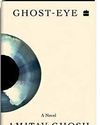The Day Bombay BLEW UP
Reader's Digest India
|April 2022
Seventy-eight years ago this month occurred a great explosion in Bombay harbour that killed hundreds and imperilled the city

APRIL 1985
Friday, 14 April 1944, was a pleasant spring day in Bombay, then a vital supply blaze for the planned invasion of Japan. The harbour was jammed with ships of every Allied flag. Western and Asian troops throng the city buying coloured silk, sarees, ivory elephants and incense sticks for souvenirs. In the dockside district, people were carrying on their everyday activities.
At 12:30 by the clock in the harbour tower, the dock workers stopped for lunch. On a Norwegian merchant ship, the Belray, Able Seaman Roy Hayward, going below, noticed what looked like a whisper of smoke coming from a ventilator of the Fort Stikine. This was a 7,200tonne cargo vessel, which lay in the adjoining dock. She had left Liverpool seven weeks earlier, loaded with ammunition and explosives, airplanes, stores and £2 million of worth of gold bars intended to help stabilize the rupee.
At 1:30 p.m. The dock workers returned to the Fort Stikine. As they entered Number Two hold, they saw smoke coming from the port side nearest the quay. The stevedores scrambled up from the hold shouting, “Fire!"
Men from a Bombay fire-brigade pump on the quay promptly ran with their hoses to the ship. Not until their section leader was on board, however, did he remember that, for a fire in a ship carrying explosives, his instructions were to sendan immediate Number Two alarm, which would call out a large force. With orders to dial 290, his sub-leader struggled back down the gangway, now crowded with dock workers pushing to get ashore, and dashed to a telephone. But the telephone had no dial. Confused, he ran 160 metres along the dockside, broke the glass of a fire alarm and rang the bell. Thus the fire brigade control room received only a normal call fortwo pumps. The hands of the harbour clock tower stood at 2:16 p.m.
Cette histoire est tirée de l'édition April 2022 de Reader's Digest India.
Abonnez-vous à Magzter GOLD pour accéder à des milliers d'histoires premium sélectionnées et à plus de 9 000 magazines et journaux.
Déjà abonné ? Se connecter
PLUS D'HISTOIRES DE Reader's Digest India

Reader's Digest India
Speaking of History by Romila Thapar, Namit Aroram, Penguin Random House, India
Romila Thapar is one of India's most accomplished historians, her work on ancient India being particularly well-received and a part of university curricula around the world.
1 min
December 2025

Reader's Digest India
ME & MY SHELF
Ranjeet Pratap Singh is the co-founder and CEO of Pratilipi, the largest Indian language digital storytelling platform with over 9,50,000 writers in 12 languages and over 30 million monthly readers. Singh was part of the Forbes 30 Under 30 list in 2018.
3 mins
December 2025

Reader's Digest India
HUMOUR in UNIFORM
While our frigate was taking on supplies at sea from a British ship, I noticed three of their sailors pointing to our destroyer’s squadron crest, which was proudly mounted on the side of our ship.
1 min
December 2025

Reader's Digest India
Obeshwar by A. Ramachandran, Oil on canvas, 2022 78 x 192 inches
One of independent India’s preeminent artists, A. Ramachandran (born in 1935), passed away last year, following a long and distinguished career.
1 min
December 2025

Reader's Digest India
Memes for Mummyji by Santosh Desai, HarperCollins India
Santosh Desai, one of Indian advertising's leading lights for over two decades, has a well-earned reputation for spotting cultural trends in Indian cities, as evidenced by his previous book Mother Pious Lady.
1 min
December 2025

Reader's Digest India
Ghost-Eye by Amitav Ghosh, HarperCollins India
In Amitav Ghosh's first novel since Gun Island (2019), we meet a young Marwari girl named Varsha Singh living in Calcutta in the 1960s with her strictly vegetarian family.
1 min
December 2025

Reader's Digest India
"Good Songs Stay Written ..."
Rock legend Bruce Springsteen on music as a time machine, responsibility in the family, and the situation in the USA
3 mins
December 2025

Reader's Digest India
WHEN COMPUTERS WERE FEMALE
THE PIONEERS OF PROGRAMMING WERE SIX WOMEN
6 mins
December 2025

Reader's Digest India
I Am My Mother's Older Brother
As the onset of dementia reshapes their world, a daughter becomes her mother's carer and keeper while navigating grief, duty, and unwavering love
7 mins
December 2025

Reader's Digest India
Small Changes Big Results
While motivation gets us started, discipline is what keeps us going.
3 mins
December 2025
Translate
Change font size

